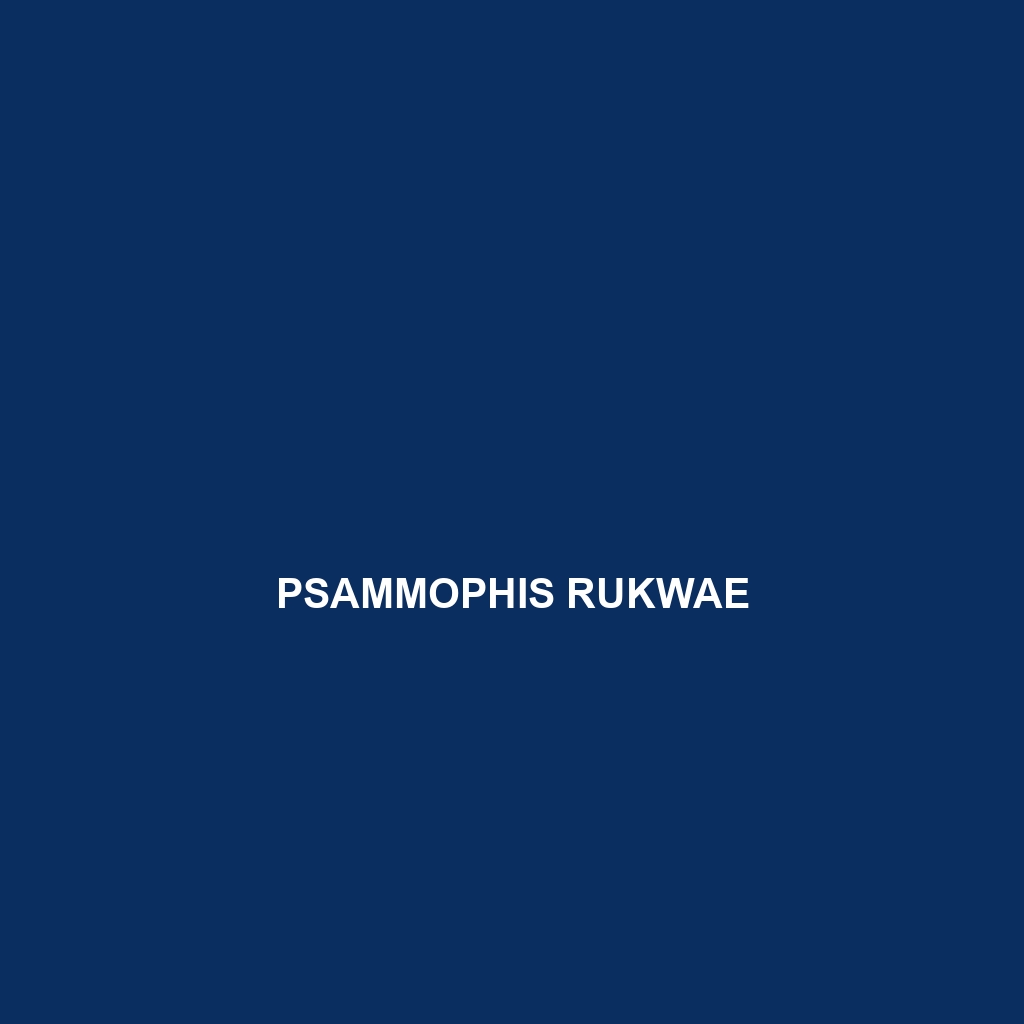Pseudoxenodon karlschmidti, also known as Schmidt's Snakes, are slender, nocturnal reptiles native to the rainforests of Southeast Asia, characterized by their striking dark brown to black scales with lighter stripes. As vulnerable species, they play a crucial role in controlling insect populations and contribute to their ecosystems' health.
Tag: snake conservation efforts
Pseudechis rossignolii
<strong>Pseudechis rossignolii</strong>, commonly known as Rossignol’s black snake, is a moderately sized, nocturnal snake found in the lush rainforests and wet savannas of northeastern Australia. Characterized by a glossy black exterior and a striking yellow-orange belly, it plays a vital role in maintaining ecological balance by preying on small mammals, birds, and reptiles.
Psammophis rukwae
<b>Psammophis rukwae</b> is a slender, diurnal snake native to eastern Africa, known for its striking yellow and light brown coloration with dark bands. Found primarily in open savannas and grasslands, this agile predator preys on small animals while playing a crucial role in maintaining ecological balance within its habitat.
Psammophis crucifer
<strong>Psammophis crucifer</strong>, commonly known as the <strong>Crossed Sand Snake</strong>, is a slender, diurnal snake typically measuring 70-90 cm long, adorned with pale yellow to beige scales and distinct dark cross-like bands. Thriving in a variety of habitats across eastern and southern Africa, it preys on insects and small vertebrates while playing a crucial role in maintaining ecological balance.
Prosymna somalica
<strong>Prosymna somalica</strong>, commonly known as the Somali snake, is a nocturnal carnivore native to the arid savannas of Eastern Africa, particularly in Somalia and Ethiopia. This slender snake, reaching lengths of 60 to 90 cm, exhibits excellent camouflage and unique adaptations for detecting prey, playing a crucial role in maintaining the ecological balance of its habitat.
Prosymna semifasciata
<strong>Prosymna semifasciata</strong>, also known as the striped burrowing snake, is a slender, nocturnal insectivore found in the rainforests and savannas of eastern Africa. With distinctive longitudinal stripes and a burrowing lifestyle, this species plays a vital role in its ecosystem by regulating insect populations and enhancing soil health.
Porthidium arcosae
<p><b>Porthidium arcosae</b> is a striking, nocturnal serpent from Central America, thriving in diverse habitats like rainforests and savannas. Known for its vibrant, patterned scales and ambush hunting behavior, it plays a vital role in regulating local ecosystems as both predator and prey.</p>
Rhabdophis akraios
<b>Rhabdophis akraios</b>, known as the Akraios Snake, is a colorful, slender reptile native to Southeast Asian temperate forests and rainforests. This nocturnal carnivore primarily preys on small mammals, amphibians, and reptiles, playing a vital role in maintaining ecological balance.
Ramphotyphlops similis
Ramphotyphlops similis, also known as the Similis Blind Snake, is a small, cylindrical burrowing species native to Southeast Asia, primarily found in tropical rainforests and savannas. This nocturnal snake, typically measuring 20 to 45 cm in length, feeds on small invertebrates like earthworms and plays a vital role in its ecosystem by aiding soil health through aeration and pest control.
Ramphotyphlops erebus
Discover the Ramphotyphlops erebus, also known as the ebony blind snake, a small, subterranean insectivore native to tropical rainforests of Africa, characterized by its smooth, glossy scales, cylindrical body, and reduced, non-functional eyes. Thriving in warm, humid environments, this snake plays a vital role in its ecosystem by controlling invertebrate populations while maintaining a secretive, nocturnal lifestyle.









